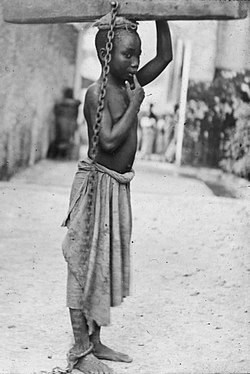This article's lead section may need to be rewritten.(June 2025) |

The Arab slave trade refers to various periods in which a slave trade has been carried out under the auspices of Arab peoples or Arab countries. The Arab slave trades are often associated or connected to the history of slavery in the Muslim world. The trans-Saharan slave trade relied on networks of all Arab, Berber, and sub-Saharan African merchants.